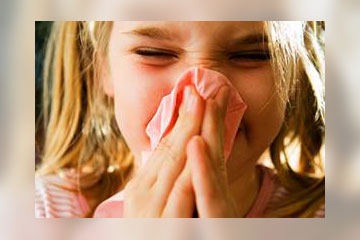
Scientists at the University of Colorado School of Medicine have shed light on one of the most common of ailments – the runny nose.
Your respiratory tract is under constant attack and the nose is the first line of defense. Often, especially as the weather warms, the assault comes from allergens, which cause the body to fight off a perceived threat. Infections, too, are a problem.
But millions of people get a runny nose and have difficulty breathing without an allergic attack or infection. What many people call the sniffles, scientists refer to as “non-allergic rhinitis.”
Although it is common, the problem has been mysterious; researchers had not figured out why this happens – suspects include air pollution, strong emotions, even spicy food -- and so have not been able to come up with a treatment beyond some variation of time, tea and tissues.
 Now, the CU team led by Thomas Finger, PhD (pictured right), has figured out what may be going on to cause so many people discomfort. Understanding the cause could lead to figuring out a cure.
Now, the CU team led by Thomas Finger, PhD (pictured right), has figured out what may be going on to cause so many people discomfort. Understanding the cause could lead to figuring out a cure.
Finger and his team, supported by a National Institutes of Health grant and working with a Danish colleague, report in the Proceedings of the National Academy of Sciences that they found cells lining the noses of mice that may be key.
These cells – called solitary chemosensory cells (SCCs) -- detect potential irritants and pass along the alert to pain-sensing nerve terminals.
The nerves then release a substance that triggers the body’s defenses, called an inflammatory response. The result -- among other things, a runny nose and difficulty breathing.
“Understanding how this works can help researchers try to figure out how to prevent this response,” Finger says. “What if we could deaden the pathway that the body takes to fight off an attack that, in this case, is not really threatening?"
It’s not yet certain that the process is identical in humans, Finger says. But if it is, and if some people are responding to substances or smells that appear to be a threat but actually are benign, then additional research could find a way to help millions of people to, literally, breathe easier.
